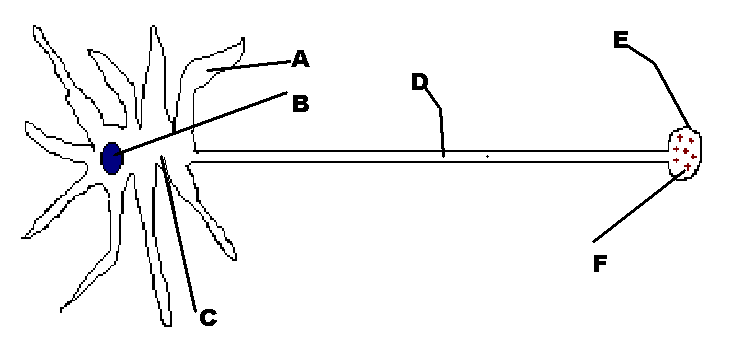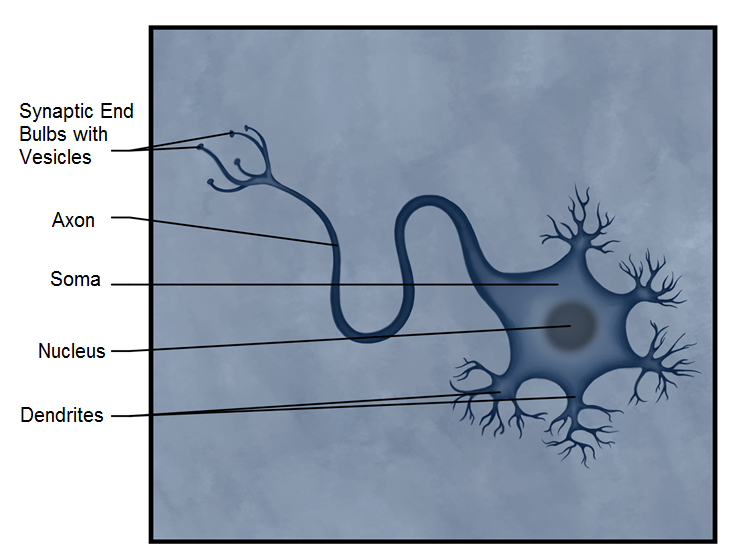The Neuron
In the diagram below, several parts of the multipolar neuron are labeled. The dendrites (A) and the axon (D) are cytoplasmic extensions of the cell. Dendrites conduct impulses to the cell body (B). They are very long in sensory neurons (up to a meter or so) and much shorter in motor neurons. Axons conduct information away (think " Axon Away") from the cell body they are very short in sensory neurons and long in motor neurons (up to a meter or so). The soma or cell body contains the nucleus of the cell. Sensory neurons are unipolar and their cell bodies are found in structures bilateral to the spinal cord called dorsal root ganglia. Cell bodies of motor neurons are found in the anterior horn of the spinal cord. We will discuss spinal cord anatomy later. At the end of the axon is a structure called the synaptic end-bulb (E). Within the synaptic end-bulb are structures called synaptic vesicles (F). The axon terminal with synaptic vesicles contain chemicals called neurotransmitter substances. Axons and dendrites are analogous to "wires" because they transmit information and they run throughout our bodies much like you have wires that run within walls of your home. Axons and dendrites are found in bundles throughout our body. These bundles of axons and dendrites are called nerves (or referred to as 'tracts' in the CNS).

Figure 2. Labeled Multipolar Neuron. The dendrites (A) and the axon (D) are cytoplasmic extensions of the cell. Dendrites conduct impulses to the cell body (B). They are very long in sensory neurons (up to a meter or so) and much shorter in motor neurons. Axons conduct information away (think " Axon Away") from the cell body they are very short in sensory neurons and long in motor neurons (up to a meter or so). The soma or cell body contains the nucleus of the cell.

Figure 3. Another View of a Neuron showing the Synaptic End Bulbs with Vesicles, Axon, Soma, Nucleus and Dendrites

Figure 4. An actual micrograph of a neuron, showing the soma and nucleus.

